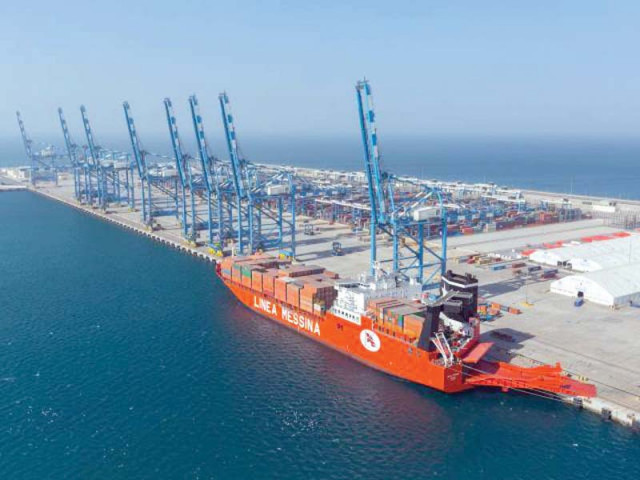CPEC to generate returns for paying back foreign debt
Challenges like low tax receipts, unhealthy business climate and weak governance still remain

The first of the power projects is expected to come online by June 2017 in Punjab. It will give some boost to the national economy and create resources for the country to clear IMF loan. PHOTO: FILE
This borrowing helped ease the strain on the balance of payments and enabled the country to bear cost of its foreign debt. In the meantime, foreign currency reserves of the country, which had dropped to dangerously low levels three years ago, swelled to an all-time high in 2016.
Will Pakistan forever be indebted to China for CPEC?
The loan programme successfully ended at a time when Pakistan kicked off work on a raft of infrastructure projects including the building of energy plants and ports and construction of roads and highways under the $46 billion China-Pakistan Economic Corridor (CPEC).
There is important relationship between the IMF loan and CPEC as Pakistan will start repaying the IMF debt in 2018 and this will be the time when CPEC will start giving returns to Beijing and Islamabad.
Arif Habib Limited Head of Research Shahbaz Ashraf calculated that China had so far invested $15-16 billion in CPEC projects. The projects, especially the power production plants, would help Pakistan’s GDP to grow by an additional two percentage points from FY19, he said.
Apart from this, services to China for transporting its trade cargo via Pakistan would generate $500-700 million per annum for Islamabad, Ashraf said. “This amount may be utilised to pay back China’s debt for CPEC projects, which is mostly included in the power tariff to be recovered from end-consumers.”
The first of the power projects is expected to come online by June 2017 in Punjab. It will give some boost to the national economy and create resources for the country to clear IMF loan as well as service and reduce the huge overall foreign debt worth around $74 billion.
However, such developments will not come easily unless the government has the courage to tackle the persisting challenges and address fundamental faults in the economy and the political system.
“Significant challenges remain for Pakistan in the post-loan period,” IMF Deputy Managing Director Mitsuhiro Furusawa said after the loan installments were completed.
CPEC challenge and opportunity
Tax compliance
A senior economist, who was associated with the loan programme, outlined a number of existing problem areas, saying the tax-to-GDP ratio “is still very low...everywhere Pakistan is lagging behind {including} primary education.”
“Tax compliance is a national issue. Political class has to pay taxes,” he said. Circular debt had been at the heart of crisis in the energy chain, but it was under control now, he said.
The economist pointed to the business climate and governance as some other problem areas. “It is very difficult to do business and deal with bureaucracy in the country,” he said.
The deficit in balance of payments and weak exports were some other areas that required serious efforts on the part of the government. The efforts should not be restricted to an “incentive package...but some serious export promotion steps should be undertaken,” he said.
Former State Bank of Pakistan governor Dr Ishrat Husain was quoted as saying the other day, “Vested interests, which are likely to lose out under the reform process, have a strong political and economic hold on decision-making under every elected government. They make sure that only some cosmetic changes take place for acquiring IMF and other external financing and then go ahead with business as usual.”
London School of Economics’ Professor of Economics and Political Science Timothy John Besley, who visited Pakistan last week, said promotion of values and norms in the society were a must to create a culture of tax payment.
Major questions about CPEC answered
Responding to a question at a lecture, he said if someone in parliament and judiciary did not pay taxes, it had nothing to do with the regulations in place, but it was linked with the norms and values.
People would pay more taxes when the collection was reflected in investments in old-age benefits and education, he said.
If governments in office do not address the fundamental faults, Pakistan will continue to beg for foreign loans to clear the previous ones.
Many economists including Dr Ashfaque Hasan Khan and Dr Shahid Hasan Siddiqui are among those who argue that Pakistan will return to the IMF in FY18.
The writer is a staff correspondent
Published in The Express Tribune, December 19th, 2016.
Like Business on Facebook, follow @TribuneBiz on Twitter to stay informed and join in the conversation.



















COMMENTS
Comments are moderated and generally will be posted if they are on-topic and not abusive.
For more information, please see our Comments FAQ